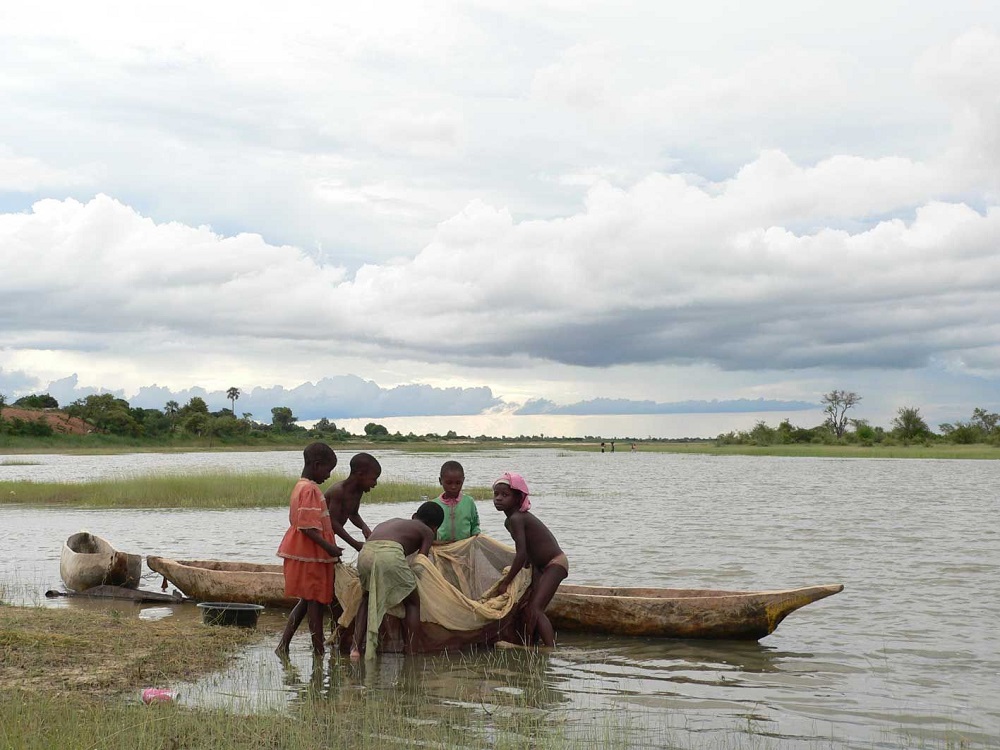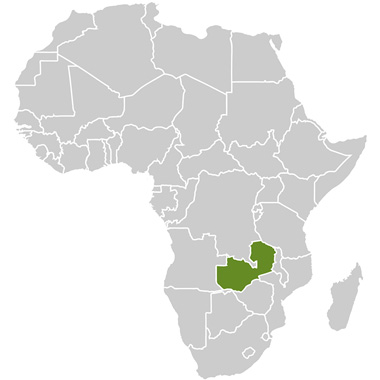Mwandi is a village located between Livingstone and Sesheke and is home to the Barotse Royal Establishment and Chief Inyambo Yeta IV. The village has little tourist infrastructure yet has much to offer tourists who are seeking an authentic African experience. The village is also home to the ‘kuta’, or cabinet. Each kuta has a senior chief at its head, a prime minister (Leashimba) and a Minister of Justice (Mbanwa). The Kuta sits every day and anyone in the village is welcome to attend. The kuta deals with a range of issues affecting the tribal Sesheke district. Strict traditions still apply and anyone that wishes to sit in the Kuta should be aware of these. The kuta may only be entered from the back and upon entering you kneel and clap hands. It is an experience to see how one of the oldest governing systems in Africa still operates today.
The village itself is quiet, except for the bustling market in the main street. The market offers anything from brightly coloured materials to fresh produce and fish. Take time to stroll through and meet some of the locals who are always eager to assist. Mwandi gives one insight into the workings of a modern-day African village. Villagers can be seen collecting water in all sorts of containers from the borehole in town. A bell rings four times a day when the chief is in residence. Once in the morning to announce the start of a new day, twice in the afternoon to indicate the start and end of lunchtime, and at 22h00 in the evening to indicate that noise should be kept to a minimum.
Mwandi is renowned for fishing as it is not heavily fished by tourists nor heavily netted by locals. It is therefore a part of the river that still provides excellent catches. Most visitors to the Zambezi come for the really big trophy tiger fish. These fish gather in the area over the winter months when the floodwaters from the surrounding floodplains are receding. As the waters recede baitfish are forced back into the channels where the big tigers lie in wait. The river bottom is sandy and the river is not too deep, making it a good destination for fly-fishing. Here you will also find good stocks of nembwe, which can be caught either on fly or lure.
Seheke is a bustling little town on the bank of the Zambezi. If you are heading west this will be your last chance to pick up supplies. The town doesn’t have a supermarket, so choices are limited to what the locals usually need. You will be able to find the basics like bread, cooldrinks, beer and a few other things. The town has a few guesthouses as well as a bank where money can be changed.
Sesheke district is one of the country’s overlooked birding hotspots. With a potential bird list of around 500 species, this area supports a diverse range of bird communities and forms the meeting point for some major bird groups, such as dry west specials (Red-billed Francolin, violet-eared waxbill, black-chested prinia, shaft-tailed whydah), southern woodland endemics (Natal francolin, double-banded sandgrouse, southern black tit) and birds restricted to south-central Africa (Arnot’s chat, racket-tailed roller, sharp-tailed starling).
From Sesheke you cross the bridge known as the Katima Mulilo Bridge (or Bridge 508 in the Namibian Bridge Register). The bridge carries the TransCaprivi Highway over the Zambezi River between Katima Mulilo, Zambia and Sesheke, Namibia. The bridge, completed in 2004, is 900metres long and is intended to carry traffic for both trade and tourism.
Plans for the bridge were first considered in Namibia in 1982, and the number 508 was allocated to the project. However, the occupying South African government was opposed to the project, and only after Namibian independence in 1990 was planning resumed. In 2002 the contract for construction was awarded and the bridge was completed on schedule in 2004. The bridge was constructed using the German technique of incremental launching (Taktschiebe-Verfahren), with the deck of the bridge constructed on location then hydraulically pushed segment-by-segment across the river. Those who travelled the road before the bridge was constructed, and made use of the pontoon ferry, will confirm how favourably the bridge influenced travelling in the area.
On the other side of the bridge you will find Katima Mulilo, which should not be confused with Katima Mulilo, Namibia. This is little more than a compound with a few shops and two guesthouses catering mainly for local business travellers. If you are heading far west and need supplies you would be advised to cross the border into Katima Mulilo, Namibia. They have a wider range of goods and a big supermarket that stocks most requirements.


